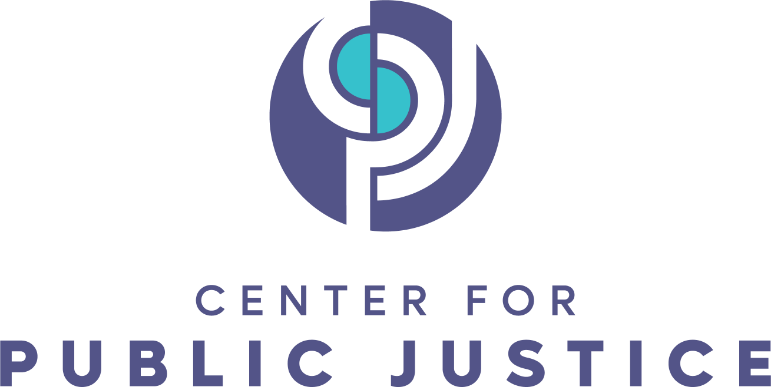
In a 6-3 decision issued on June 21, the U.S. Supreme Court ruled that the state of Maine may not exclude private schools that provide religious instruction from its tuition assistance program. Most rural public school districts in Maine do not operate a public secondary school, instead having parents choose a private school and then paying the required tuition on their behalf. However, Maine claimed that the U.S. Constitution prohibited it from paying the tuition of schools that not only have a religious identity but also teach from a religious perspective. According to the Court, the opposite is the constitutional requirement: under a program similar to Maine’s, where parents choose the school and thus determine where state tuition payments go, exclusion of schools teaching from a religious perspective is unconstitutional. This is the outcome IRFA, and many other religious freedom organizations and scholars, urged on the Court.
The decision should not be a surprise. Already in 2002, the Supreme Court had ruled in Zelman v. Simmons-Harris that the Cleveland school choice program created by an Ohio law did not violate the First Amendment’s prohibition of religious establishment when the private schools parents were allowed to choose religious as well as secular schools. Maine, claiming a desire to strengthen separation between church and state, ignored Zelmanand excluded “sectarian” religious schools from its tuition-support program.
By doing so, the Supreme Court has now ruled, Maine violated the free exercise of religion requirement of the First Amendment since it penalized some parents by not paying tuition payments simply because of their religion-based choice of school. Again, Maine was violating Supreme Court rulings.
Trinity Lutheran v. Comer, a 2017 decision of the Supreme Court, rejected Missouri’s claim that it must exclude for constitutional reasons a church-owned playground from a state grant program that paid to resurface playgrounds with recycled tire rubber. The state was not permitted to exclude the church’s application solely because it came from a church. That would have been an unconstitutional status-based exclusion. Similarly, in its Espinoza v. Montana Department of Revenue decision two years ago, the Court ruled that Montana could not exclude religious schools from a tuition support program simply because they were religious schools.
Maine claimed its policy was different: it only excluded from its tuition payment program religious schools that offered sectarian education—schools where the public funding would end up paying for religious teaching. It did not reject schools based on their religious status, it said, but rather certain religious schools because funding them would mean funding religious use.
The Court’s majority did not accept the state’s attempt to draw a sharp distinction between status and use. While it might be the case that the education in some religious schools is hardly touched by religion, “the very core of the mission of a private religious school” is to educate its students in the teachings and about the life-implications of the religion, the opinion says, quoting one of its earlier school decisions. Moreover, a state could hardly assess and patrol the religiousness of the education of a religious school without getting unconstitutionally entangled in the affairs of the school. In accepting some religious schools and rejecting others, it would be unconstitutionally favoring one denomination or variety of religion over another. Maine’s purported status vs. use distinction could not save its effort to prevent some of its school funding from supporting religious teaching in religious schools.
Overall, the Supreme Court has affirmed a clear principle in this decision: while states are not required to provide financial support to private schools, if they do provide support, they cannot exclude religious schools. As Nicole Stelle Garnett emphasizes, the Carson “ruling represents the culmination of a battle for the equal treatment of faith-based schools that stretches back to the first half of the nineteenth century,” when Catholics in the United States began to seek government funding for Catholic schools because the education in the public schools of the day reflected Protestant Christianity.
The Carson ruling, then, is a great victory for school choice, for the equal treatment of whichever variety of private schools parents desire for their children. And greater school choice is a victory for school-attending children and their families, who do best when they can select the most appropriate among many educational options. (Long before official state-run school choice programs, as Charles Glenn says, middle-class and rich parents have enjoyed school choice—being able to move to a different public school district or to afford the tuition charged by private schools.) And, although Justice Breyer, in his dissenting opinion, argued that the majority’s decision may lead to increased religious conflict, the opposite is much more likely. It is apparent that parents do not share the same view of important issues such as the relevance of religion to education, how to teach about the equal dignity of all people, and what to say about human sexuality and marriage. Expanding parent choice in schooling, as the Carsondecision requires, makes it easier for parents to find a school that they trust for their own children to attend.
The Carson decision and the faith-based initiative.
Does the Court’s decision in Carson in effect abolish the distinction embedded in Charitable Choice and in the subsequent Equal Treatment regulations between direct government funding of private organizations to provide services and indirect funding of such organizations? With directfunding, government officials award funds to the private organization they regard as the best. To avoid establishing religion, a private organization funded in this way has been required not to include religious activities or discussion in the government-funded program of service, although the organization can fund such activities and discussion itself and offer them on a voluntary basis to people who come for the government-funded service. With indirect funding, the government authorizes a person or family to select a service provider of their own choice and then pays the selected provider. The government is supporting the choice of the person or family, not setting out to pay for religion, and, in consequence, services incorporating religion may be among the options that can be selected and, thus, funded by the government.
Has the Carson decision rendered this distinction with its church-state consequences, a distinction minimized by the Trump administration in its revision of the Equal Treatment regulations, unnecessary and void? After all, did not the Court instruct the Maine government, and every other government with a policy similar to Maine’s, that they cannot exclude religious organizations, even those that offer services that incorporate religion, when paying private organizations to provide services? But we must not forget what kind of organizations were involved in Carson, what choices of provider the parents had, and what the actual payment mechanism was. Maine operated an indirect funding mechanism in which it was parents, not the state, who decided which provider should be paid by the government. Parents had a choice among multiple varieties of schools, both religious and secular. When the arrangement is like this, the Court said, the government does not violate the establishment clause by providing funds to a provider chosen by the beneficiary, even if the provider offers a service that incorporates religion. Furthermore, the Court ruled that if the government refuses to fund a beneficiary’s choice simply because that choice involves religion, then it violates the free exercise clause.
Despite the fears of some and the hopes of others, the Supreme Court’s Carson decision does not require or validate government decisions to fund religious rather than secular services and organizations. Rather, the Carson decision further supports a pluralist approach to government funding of services. It supports indirect government funding—funding that follows the choices of beneficiaries. Carson mandates neither government funding of secularism alone nor government funding of religion alone.





